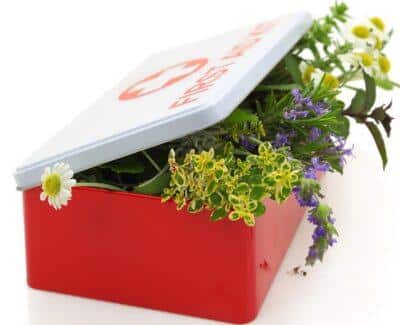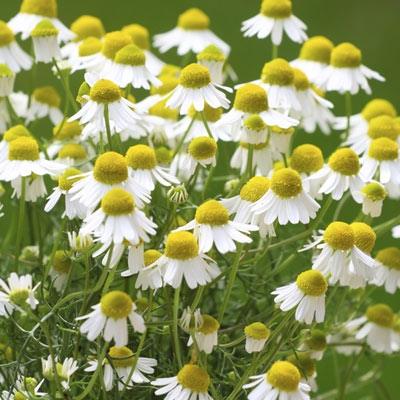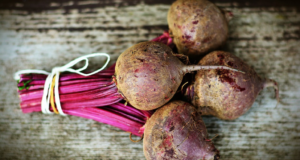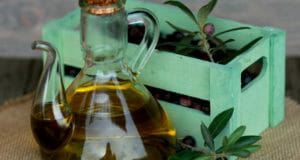|
Listen To The Article
|
Take a look inside the average first-aid kit and you’ll likely find chemical-filled antibiotic sprays and ointments. While these products tend to be quite effective and cheap, they are far from natural and holistic. Fortunately, you can create your own first-aid kit with healthier products relatively easily.
If you have no first-aid kit, this list will be an excellent resource to get you started. This list is by no means definite but does cover all the bases of basic, natural first aid. If you already have a first-aid kit, don’t feel like you have to throw everything away and start over. It would be a better idea simply to phase in new products as your old ones are used up or reach their expiration date.
Let’s get on with the list:
1. An Air-Tight and Leak-Proof Container
A sturdy storage container is the perfect first-aid kit container, especially if it has a handle for mobility and a locking lid to keep children out. Typically, storage containers by brands like Sterilite or Rubbermaid are clear. But if you can find a proper-sized model in tinted or opaque colors, opt for those.
The Hidden Secrets Of Making Herbal Medicines…Right At Your Fingertips!
Opaque containers will be excellent for preventing light/sunlight from damaging your products and tinted containers will be more effective at this than see-through models. Either way, you should keep your first-aid kit in a cool, dark place that isn’t excessively humid.
2. Pure Essential Oils
If you aren’t already aware, high-quality essential oils are incredibly powerful. Not only do certain scents invoke emotions and feelings such as calmness or alertness, but many also have healing capabilities. (Read: A Beginner’s Guide To Essential Oils.)
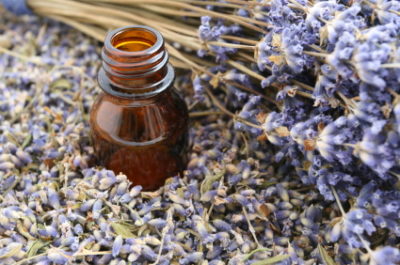 Also try to purchase 100 percent pure essential oils. Be aware of cheap blends that use fillers or oils being sold as essential oils when they are in fact fragrance oils and should NOT be used.
Also try to purchase 100 percent pure essential oils. Be aware of cheap blends that use fillers or oils being sold as essential oils when they are in fact fragrance oils and should NOT be used.
Here are a few essential oils you should keep in your first-aid kit:
- Eucalyptus Oil: Very effective at clearing congestion. Has antiviral and antiseptic qualities. Quite useful for all respiratory issues and some allergies. External use only recommended.
- Lavender Oil: Wonderfully calming, which is useful for falling asleep and relaxing when sick. It’s antimicrobial and works as a pain reliever. Especially good in the treatment of skin injuries like burns or cuts. (Read: 12 Remarkable Off-Grid Uses For Lavender Oil.)
- Tea Tree Oil: A must have for fighting all nasties – it’s anti-fungal, antimicrobial, antiviral and antibacterial. Also helps relieves pain. Very good for many medical applications, from fungal infections to warts. (Read: 14 Miraculous Healing Uses For Tea Tree Oil.)
- Clove Oil: Powerful oil for fighting tooth pain but also surprisingly versatile. It fights fungus, bacteria, microbes and viruses. Also offers a slightly sedating affect. Aside from tooth pain, clove is great for minor, open-wound treatment.
- Chamomile Oil: The tea may be great but pure chamomile is perfect for a first-aid kit. The oil gives a calming effect and reduces inflammation and pain. Excellent at fighting skin-related health conditions such as eczema and rashes, as well as other ailments like cramps and headaches.
- Peppermint Oil: One whiff of peppermint oil is sure to wake up your senses. This oil fights bacteria and is a natural antiseptic. It is great for clearing up sinus trouble as well as calming the stomach during a bout of nausea and/or vomiting. Super versatile as it can be taken internally or use externally (such as a massage oil for stiff muscles).
This is really just the tip of the iceberg in terms of which oils are useful for first-aid applications. I highly recommend investigating this subject further and deciding which oils are best for your needs.
New “Survival Herb Bank” Gives You Access to God’s Amazing Medicine Chest
3. Herbs and Spices
Fresh herbs are usually the most potent, but it is still a good idea to have dried versions of these herbs in your kit.
- Chamomile: High-quality dried chamomile is good to keep in your kit for making teas. Purchase the best quality dried chamomile that you can (not tea packets from the store). Dried chamomile also can be used to make soothing poultices for various wounds.
- Cayenne Powder: A sachet of cayenne powder is a good idea as it has wonderful staunching capabilities when applied on external wounds. Buy empty gel capsules and fill them with cayenne for taking internally. Cayenne helps speed the healing process after illness by increasing blood flow.
- Comfrey: Comfrey is a wonderful herb that is useful as a poultice. This herb helps the healing process of many types of injuries and seems to be especially useful for fractures.
- Ground Ginger: Ginger isn’t just a delicious spice to add to meals but also has a place in the first-aid kit. Perhaps you’ve heard the advice of eating ginger snaps or drinking ginger ale for an upset stomach before? Ginger is very soothing when it comes to digestive upsets of all types.
Could This All-Natural ‘Detox’ Capsule Have Extended John Wayne’s Life?
Other Supplies
Here are some other useful first-aid supplies to have in your kit.
4. Activated Charcoal: Very useful for emergency situations in which a toxic substance has been ingested or if the person is experiencing stomach flu symptoms.
5. DIY Natural Vapor Rub: Traditional Vicks has nothing on the effectiveness of this recipe. Learn how to make your own natural vapor rub here.
6. DIY Healing Cream: You can replace traditional antibiotic ointments or sprays with this Natural Neosporin Alternative.
7. Natural Lozenges: Teas are wonderful for soothing a sore throat but sometimes lozenges are your best bet if you are away from your house. You can make your own (check out this recipe) or buy all-natural lozenges such as Wedderspoon lozenges, which are as effective as they are delicious.
8. Vitamin C and Vitamin D Tablets: Taking extra vitamin C and vitamin D will help adults and children alike get through an illness more quickly.
9. Sea Salt: Sea salt mixed into warm water (one-fourth to one-half teaspoon dissolved in a cup) can be used to clean wounds as well as be swished in the mouth to sooth tooth pain or oral injuries like a burnt tongue.
10. Hydrogen Peroxide: Excellent for cleaning up abrasions and scrapes. Can also be swished in the mouth for oral trouble – just be sure to spit it out. This also can be dripped into the ears via a cotton swab or cotton ball to prevent or heal an ear infection. A cotton ball with hydrogen peroxide should not be left in the ear for more than 10 minutes. (Read: 5 Off-Grid Reasons You Should Stockpile Hydrogen Peroxide.)
11. Bandaging Materials
- Superglue
- Butterfly Bandages
- Regular Bandages
- Liquid Bandages
- Gauze
It is often much cheaper to buy these products, particularly the liquids, in larger containers or in bulk. To keep a tidy, compact first-aid kit, I recommend you use small bottles found in the travel section of drug stores or big box stores. By divvying up the product in smaller containers you’ll have some for your kit and your medicine cabinet at home.
This list is a wonderful starting point for a natural first-aid kit. Please keep in mind that these products are only for use in treating minor injuries and are not a replacement for medical treatment via a medical doctor.
While many people believe that natural remedies are safer than modern medicines, this is not an excuse to go about holistic health care without thorough research. Some people, particularly children and pregnant women, can be especially sensitive to essential oils, and extreme care must be taken.
Please share your own list of your favorite, natural first-aid supplies or DIY recipes in the comment section below!
 Off The Grid News Better Ideas For Off The Grid Living
Off The Grid News Better Ideas For Off The Grid Living

